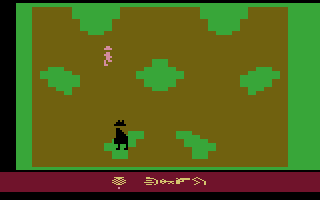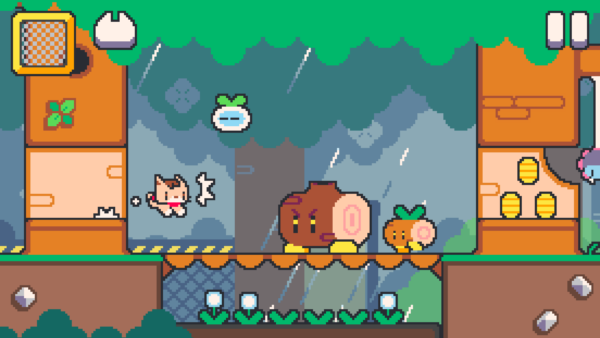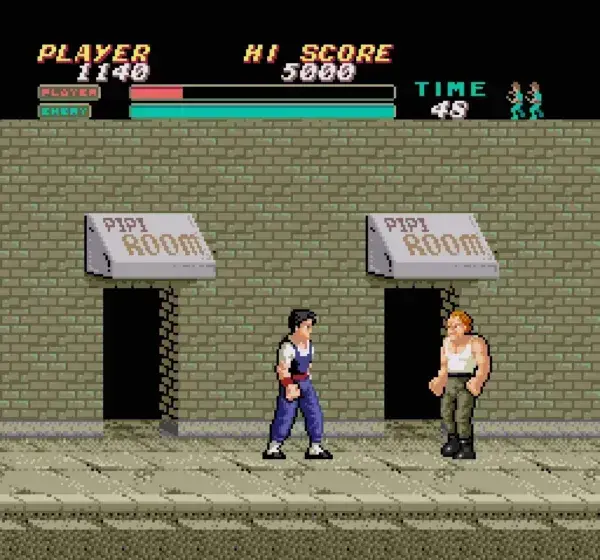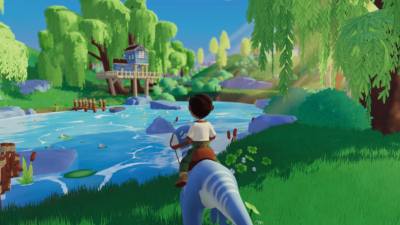
Howard Scott Warshaw recalls the early years of the games industry – and the first ever licenced games, starting with Raiders of the Lost Ark…
The field of streaming video is starting to coalesce and narrow after an intense and crazy scramble, with virtually everyone joining the fray. This is a familiar sequence with any hot technology innovation. It starts as a trickle, soon becomes a flood, and eventually evolves into a new irrigation system. This is the cavalcade of consequences. The flood part of this transition is very exciting. That’s the feeding frenzy!
I remember sitting in a hot desert in the middle of a sandstorm years ago. I was witnessing an immense effort to launch a new major diner at the feeding frenzy phase of streaming video. Something about this felt familiar to me.
Participating in the birth of a new medium is a wonderful thing. It’s like a fresh start. I’ve been a producer, teacher, programmer, designer, manager, photographer, writer, filmmaker, public speaker, and now I’m a psychotherapist. Few things in life thrill me quite as much as fresh starts.

The tendency for licensed tie-ins to be rushed and subpar was established early with Atari’s E.T. game
The thrill is all about having a fresh field of untrodden snow glistening before me and the opportunity to make the first footprints any way I choose. Perhaps in a fabulously new way nobody’s ever seen before. And this is also where the familiarity comes in…
Because I realise this isn’t my first new medium – video games were my first. And what comes with a new medium? New experiences. New opportunities. New perceptions and conceptions and entertainment breakthroughs. The chance to show people something they’ve never been able to experience before. I was there at the feeding frenzy phase of video games. That is exciting to me. That is the big rush.
But what’s the rush? It takes time for new experiences to come around. Interestingly, what usually happens is the new medium starts off redoing everything done before in other media. Why? Two reasons, primarily.
First, it’s safe. Existing content is established, well-known, and it’s already there suggesting itself. Second, it’s new. The exciting aspect of a new medium is also the problem with a new medium: all the wild and revolutionary things no one ever thought to do in previous media are still unthought and undone.
It takes time and talent (and a few fortunate accidents) to really begin to innovate with a new medium. However, the people who fund the development of the new medium want to recoup their investment right away, creating pressure to produce saleable products in the new medium immediately.
This pressure is anathema to creators and inventors who want to spend all their time brainstorming something that will make people see the incredible potential and possibilities of the new medium. And yet, the problem of having to produce something saleable immediately can generate one big benefit. And that benefit (and here is something you almost never hear engineers say) is marketing!

There have been some inevitable losers in the streaming video gold rush. One of the big ones, Quibi, launched in 2018 – it survived less than two years
Sometimes. Marketing is what CEOs turn to when they need to get revenue and they have no idea how.
On the one hand, there are lame marketing people who have no ideas. They will come to you and say, “Here’s what I can sell. Make this.” Naturally, this is impossible to create with the technology. And when you show them what you can make with the technology, they freak out. They say, “Oh no! I can’t possibly sell that.” To paraphrase Nolan Bushnell, “What drives engineers crazy is idiotic marketing people asking them to violate the laws of physics, which they do on a regular basis.”

On the other hand… There are marketing people who aren’t lame and who do have ideas. They don’t understand the technology any better, but they do understand how to separate the selling from the product. And this creates wonderful opportunities because it takes pressure off the developer to make something too specific and gives them a chance to experiment, to try something new and innovative.
Take Atari in 1981, for example. The typical marketing input for product direction was little more than a two-word title like “Rock Fight” or “Speed Chase”. But there was one marketing innovation that did emerge: the licensed property. Initially, it was the obvious coin-op title, but then came the major motion picture licence. That totally changed the game. (Pun intended.)
The upside is that you now have a sales hook that leaves more wiggle room for the product. Yes, players have expectations, but not like in a coin-op conversion. The benefit is the licence lends credence to any original concept you can shoehorn into the game.
The first non-game-related licence was Raiders of the Lost Ark. In Raiders, I was able to expand the threshold of game entry and make it a little tougher because I knew the licence would increase people’s commitment to the game. They were less likely to give up and walk away from Raiders than they were from an average game, and I used that to make Raiders a pretty intense VCS game.
The downside to a movie licence is the introduction of a far more rigid release deadline. If you plan to use a popularity window to goose your sales, you better hit that window! The first game where that really became an issue? E.T.





